Eikös nuo meille tilatut Parrotit olleet toistaiseksi pelkästään koulutusversiota? Eli voisi odottaa häirinnästä selviytymisen olevan heikonpuoleista, mutta sitä sietoisuutta ei ole tilattukaan. Varsinaisten operatiivisten yksilöiden toivoisi sitten kestävän paremmin häirintää. Ne vaan ovat sitten sen verran kalliimpiakin.Vuonna 2019 suunnitellut jenkkidroonit eivät selviydy Ukrainassa EW-häirinnästä johtuen. Ei sinällään yllätä ja hyvä että näitä on testattu. Seuraava dronesukupolvi tullee olemaan sitten parempi. Mielenkiintoista olisi tietää Suomen hankkimien Parrottien toiminta..
Silicon Valley company Skydio has sent hundreds of its most capable UAVs to Ukraine to help fight the Russians, but the technology has not performed well.
Skydio's drones kept going off course and being lost due to Russian electronic warfare systems. The company has gone back to developing and building a new fleet.
US-made UAVs tend to be expensive, faulty and complicated to repair, say drone company executives. Quote from Skydio Chief Executive Adam Bry: "The general reputation for every class of U.S. drone in Ukraine is that they don’t work as well as other systems."
Executives at US drone companies say they did not expect electronic warfare to unfold in Ukraine. In the case of Skydio, their UAV was developed in 2019 to meet the communication standards set by the US military.
US-made drones are fragile and unable to overcome Russian jamming and GPS jamming technologies. Sometimes, they failed to take off, complete a mission, or come back. US-made UAVs are often unable to fly the declared distances or carry significant payloads.
Install the app
How to install the app on iOS
Follow along with the video below to see how to install our site as a web app on your home screen.
Note: This feature may not be available in some browsers.
You are using an out of date browser. It may not display this or other websites correctly.
You should upgrade or use an alternative browser.
You should upgrade or use an alternative browser.
UAV / UCAV / LAR (robotit) Uutiset ja jutut
- Viestiketjun aloittaja Raveni
- Aloitus PVM
Kyllä näin taitaa olla. Aivan suoraa tietoa tuosta en löydä paitsi seuraavat artikkelit tosiaan puhuvat koulutuskäytöstä eivätkä operatiivisesta käytöstä. Eli luultavasti militaarimalli on sitten kuitenkin vähän parempi, tai ainakin suotavaa olisiEikös nuo meille tilatut Parrotit olleet toistaiseksi pelkästään koulutusversiota? Eli voisi odottaa häirinnästä selviytymisen olevan heikonpuoleista, mutta sitä sietoisuutta ei ole tilattukaan. Varsinaisten operatiivisten yksilöiden toivoisi sitten kestävän paremmin häirintää. Ne vaan ovat sitten sen verran kalliimpiakin.

edit: ilmeisesti tuota kyvykkyyttä rakennetaan vasta, ja lopullinen malli voi olla jokin muukin
https://www.lentoposti.fi/uutiset/p...minen_etenee_ostolistalla_jopa_2000_lennokkia
Nyt toteutuneella koulutuslentolaitteiden hankinnalla luodaan perusta suorituskyvyn rakentamiselle ja laajemmalle käyttöönotolle. Parrot ANAFI USA -lentolaitteet Puolustusvoimielle toimittaa Boston Group Oy.
Boston Group on Pohjoismaiden suurin sekä kaupalliseen että yksityiseen käyttöön tarkoitettujen dronejen jakelija. Se on perustettu vuonna 1996 Tanskassa ja yhtiöllä myyntitoimistot Suomessa, Norjassa ja Ruotsissa. Dronet ovat olleet yhtiön valikoimassa vuodesta 2014 lähtien.
https://www.lentoposti.fi/uutiset/p...i_usa_lennokkeja_koulutus_ja_harjoitusk_ytt_n
Puolustusvoimille hankitaan lisää Parrot ANAFI USA -lennokkeja koulutus- ja harjoituskäyttöön.
https://www.iltalehti.fi/kotimaa/a/5491281e-296e-4996-839b-04fce72164f2
Anafi USA -mallin kerrotaan tarjoavan samat huippuluokan tietoturva-, kestävyys- ja kuvankäsittelyominaisuudet kuin sen sisarmallin, joka on suunniteltu Yhdysvaltain armeijalle.
Tämä on mennyt multa täysin ohi ja pahoittelen, jos on jo käsitelty täällä.
iMUGS demonstration - UGVs in arctic conditions
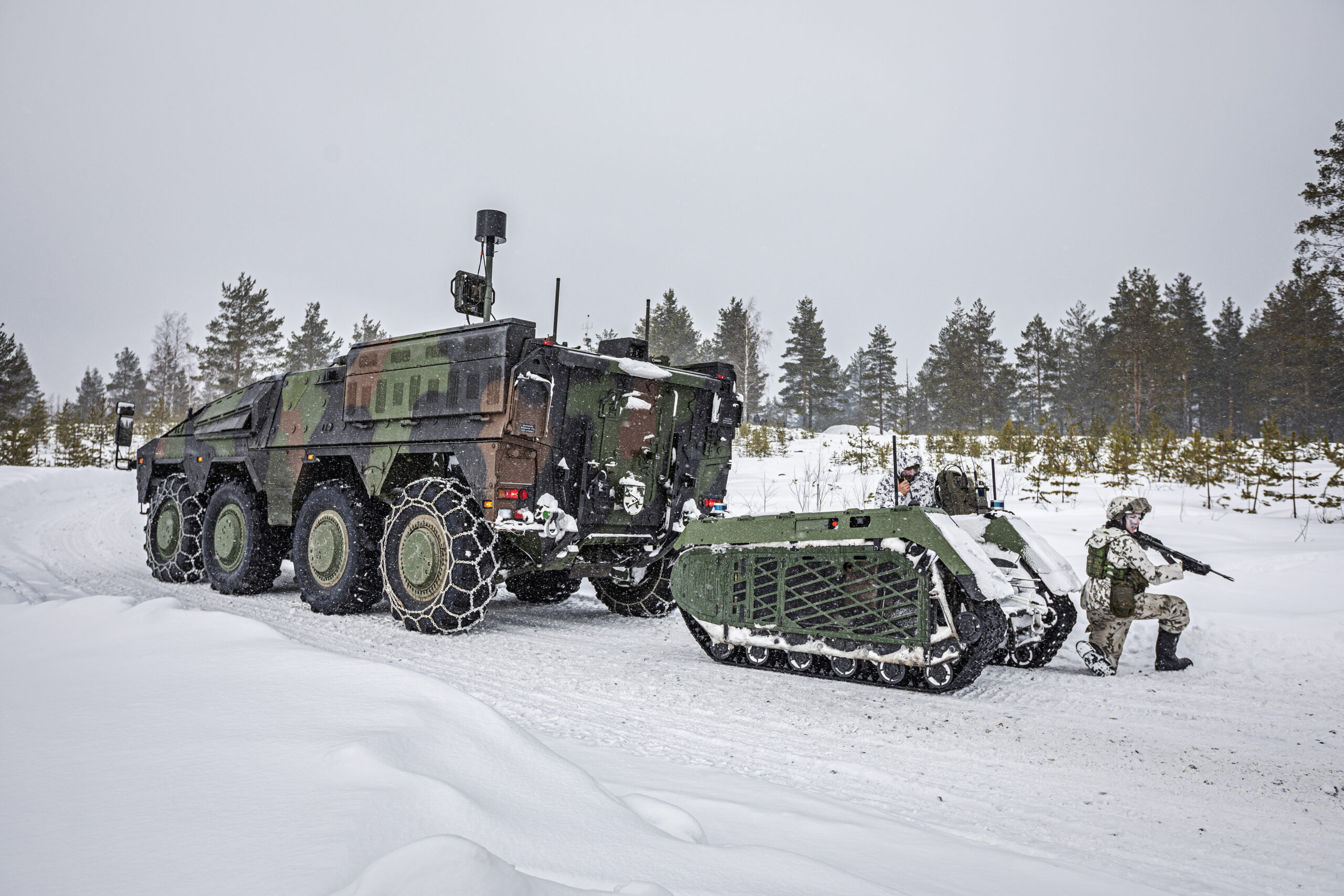
 milremrobotics.com
milremrobotics.com
iMUGS demonstration - UGVs in arctic conditions
The integrated Modular Unmanned Ground System (iMUGS) project consortium demonstrated the usage of unmanned military systems in arctic conditions in Finland. The demonstration was led by Bittium in cooperation with Milrem Robotics, Krauss-Maffei Wegmann GmbH & Co. KG (KMW) and Latvijas Mobilais Telefons SIA (LMT). The iMUGS consortium oversees a 32.6 MEUR project with the aim of developing the European standard unmanned ground system (EUGS).
The iMUGS Consortium Demonstrates Military Unmanned Systems in Arctic Conditions
24 January 2023
The integrated Modular Unmanned Ground System (iMUGS) project consortium demonstrated the usage of unmanned military systems in arctic conditions in Finland. The demonstration was led by Bittium in cooperation with Milrem Robotics, Krauss-Maffei Wegmann GmbH & Co. KG (KMW) and Latvijas Mobilais Telefons SIA (LMT). The iMUGS consortium oversees a 32.6 MEUR project with the aim of developing the European standard unmanned ground system (EUGS).
The event was organized in collaboration with the Finnish Defence Forces, and it was supported by selected technology providers FY-Composites Oy, Senop Oy, Centria and Saab Grintek Technologies. Approximately 100 international guests from 14 countries attended the event.
The objective was to demonstrate the ability of the iMUGS system – utilizing Milrem Robotics’ #THeMIS #UGV and various payloads – to assist the infantry in demanding and high-threat environments under arctic conditions. The iMUGS communication solution, provided by Bittium, supports both manned and unmanned operations integrating unmanned ground vehicles (UGVs) and unmanned aerial vehicles (UAVs) with the troops in the same secure network and deploys flexibly both tactical and commercial communication resources. Command and control/battle management systems and mission-oriented payloads were also integrated with the vehicle platform. This complete UGV solution supports manned-unmanned teaming in various applications and situations.
In the demonstration, two Milrem Robotics’ THeMIS UGVs were deployed to a reconnaissance mission. KMW’s Boxer Armoured Personnel Carrier (APC) was used as a command centre from where one of the UGVs was operated in Beyond Line of Sight (BLOS) mode with Bittium Tactical Wireless IP Network providing the control and command connections. The second UGV was operated in Line of Sight (LOS) mode with a portable controller and Bittium Tough SDR radios providing the control and command connections. The ISR and Signal Intelligence sensor feed including live video streams from a UAV and Senop’s LILLY target designator was relayed and incorporated into LMT’s Viedsargs Battle Management System (BMS) as well as screens at the command post.
Detection of the enemy target designator was made possible through the integration of SAAB Grintek’s Laser Warning System (LWS) onto one of the THeMIS UGVs. The alerts from the LWS were sent through a datalink to the BMS. The communication network was continuously monitored with the Bittium TAC WIN Network Manager tool. The Boxer APC was also used as a relay node to connect the UGVs to the command post through the Bittium Tactical Wireless IP Network. This completed the network-centric operations concept involving the teaming of manned and unmanned assets on the ground and in the air.
“The demonstration once again proved the excellent performance and capabilities of Bittium’s tactical communications system and the whole iMUGS system. The iMUGS consortium is paving the way towards the future of unmanned systems supporting European troops and providing enhanced situational awareness and Bittium is excited to be part of the project,” says Jari Sankala, Senior Vice President of Bittium’s Defense & Security. “The iMUGS cooperation is perfectly showing and underlining the ability of European countries to create demanding defence solutions in multinational cooperation.”
“The demonstration in Finland, performed under arctic weather conditions, proved that unmanned ground systems are reliable and necessary in developing military capabilities to operate even in such harsh conditions. Milrem Robotics’ THeMIS performed excellently in combination with Bittium communication systems which provided an excellent and flexible way to build a mesh network supporting autonomous and remote-controlled UGV missions,” said Kuldar Väärsi, CEO of the iMUGS project coordinator Milrem Robotics.
The demonstration organized in Finland was one of six demonstrations organized by the iMUGS project.
About the iMUGS project
iMUGS is a 13-party collaboration focused on developing a modular and scalable architecture for hybrid manned-unmanned systems. The parties involved are Milrem Robotics (project coordinator), Latvijas Mobilais Telefons (LMT), Talgen Cybersecurity, Safran Electronics & Defense, NEXTER Systems, Krauss-Maffei Wegmann, Diehl Defence, Bittium, Insta Advance, sol.one, dotOcean, GMV Aerospace and Defence, and the Royal Military Academy of Belgium.
The aim of the project is to standardize a European-wide ecosystem for aerial and ground platforms, command, control, and communication equipment, sensors, payloads, and algorithms. The project addresses challenges such as enhanced interoperability, increased situational awareness, and faster decision-making.

The iMUGS Consortium Demonstrates Military Unmanned Systems in Arctic Conditions - Milrem
The integrated Modular Unmanned Ground System (iMUGS) project consortium demonstrated the usage of unmanned military systems in arctic conditions in Finland. The demonstration was led by Bittium in cooperation with Milrem Robotics, Krauss-Maffei Wegmann GmbH & Co. KG (KMW) and Latvijas Mobilais...
 milremrobotics.com
milremrobotics.com
Brittien vuoro testailla erilaisia droneja ja robotteja sekä hieman muutakin.
Project Convergence Capstone 4 | The Future of Warfare | British Army
Project Convergence Capstone 4 | The Future of Warfare | British Army
British troops tested cutting-edge systems and technologies in the Mojave Desert and on the California CoastProject Convergence Capstone 4 was a major war-fighting experiment that improved military interoperability between the countries taking part – the USA, UK, Australia, New Zealand, Canada, France, and Japan.
Nyt on jotain uskottavammman näköistä tullut Andurilita. Koko on suurimmasta päästä mitä tällaisia on nähty, mutta Boeingin Orca on vielä hieman isompi.
Nyt on jotain uskottavammman näköistä tullut Andurilita. Koko on suurimmasta päästä mitä tällaisia on nähty, mutta Boeingin Orca on vielä hieman isompi.
Andurilin tiedote Ghost Sharkista. Tuo ei kerro mitään Ghost Sharkin ominaisuuksista tai mahdollisista käyttötarkoituksista.
First Ghost Shark Debuts in Australia - Ahead of Schedule & On Budget
Anduril, the Royal Australian Navy (RAN), the Advanced Strategic Capabilities Accelerator (ASCA) and Defence Science and Technology Group (DSTG) are pleased to unveil the first Ghost Shark manufactured prototype and announce that the Ghost Shark program is ahead of schedule and on budget. As Anduril moves to deliver an operationally relevant capability within a fraction of traditional defence timelines, early creation and testing of the first Ghost Shark has been critical for rapid learning and iteration.
It’s a momentous advancement in the $140M co-development contract between RAN, DSTG and Anduril to design and develop the three ‘Ghost Shark’ extra-large autonomous undersea vehicles (XL-AUV) in three years in Australia.
Ghost Shark is a modular, multi-purpose capability that can flexibly respond to the Australian Defence Force’s mission requirements, creating an agile force multiplier for Defence.
David Goodrich OAM, Executive Chairman and CEO Anduril Australia said: “The timeline we set to design and produce three Ghost Sharks in three years in Australia, by Australians for the ADF, was extremely ambitious. I am excited to report that we are ahead of schedule and, importantly for a Defence program, we are on budget.
“We're moving incredibly quickly on this program in lockstep with our ASCA, DSTG and the RAN partners. The strategic leadership and innovation insights provided by Prof Tanya Monro, Prof Emily Hilder and Vice Admiral Mark Hammond are key to our success,” said Mr Goodrich.
Dr Shane Arnott, Senior Vice President Engineering, Anduril Industries said: “Moving at the speed of relevance is Anduril's signature. For Ghost Shark, we have assembled a unique high-powered engineering team of 121 people from the best-of-Australia, across tech, resources and defence, to fuel this progress.
“We have 42 Australian companies currently working on Ghost Shark, which is being designed, engineered and manufactured in Australia. We plan to manufacture at scale in Australia for the Royal Australian Navy, and then for export to our allies and partners around the world.
“Using novel scaled agile development techniques, we are combining both tech and defence sector development practices - and it’s paying big dividends. Ghost Shark is a program that we as Australians can be very proud of,” said Dr Arnott.
Quotes attributable to Minister for Defence Industry, Pat Conroy:
“Ghost Shark is an exemplar of how Defence and Australian industry can move at speed to develop new sovereign capabilities to respond to the challenges before us.
“By transitioning Ghost Shark to ASCA, a clear statement is being made about Defence’s commitment to the program.
“ASCA is focussed on speeding up the transition of innovation into capability that will give our Australian Defence Force an edge, while creating more jobs for Australians commercialising the technology.”
Quotes attributable to Chief of Navy, Vice Admiral Mark Hammond:
“This collaboration combines Navy’s expertise, ASCA’s speed to delivery, Defence’s scientific smarts and Anduril Australia’s experience in agile innovation.
“We are a nation girt by sea, and the Ghost Shark is one of the tools we are developing for the Navy to patrol and protect our oceans and our connection to the world.”
Quotes attributable to Chief Defence Scientist Prof Tanya Monro AC
Delivering the first Ghost Shark prototype ahead of schedule sets a new standard for capability development at the speed of need. Ghost Shark is already well ahead of its three-year development schedule.
The Ghost Shark program is delivering an operationally relevant capability within a fraction of traditional defence timelines. Early creation and testing of the first Ghost Shark has been critical for rapid learning and iteration – this is how we deliver advanced asymmetric capability.
DSTG is contributing its own pathfinding technologies into the Ghost Shark’s powerful capability, as well as design and development expertise for key systems and payloads.
Quotes attributable to Head of the Advanced Strategic Capabilities Accelerator (ASCA), Prof Emily Hilder
Ghost Shark is a real living exemplar of the approach we are taking within ASCA to deliver advanced asymmetric capabilities that have a two-to-three-year development horizon.
We have created an incredibly integrated team for Ghost Shark with DSTG and ASCA team members working alongside with Navy and Anduril – each of us bringing our unique expertise and experience what is ASCA Mission Zero. The only way we’ll succeed at pace is if we do this together.

Nyt ei enää simuloida vaan on lennetty oikeilla koneilla.
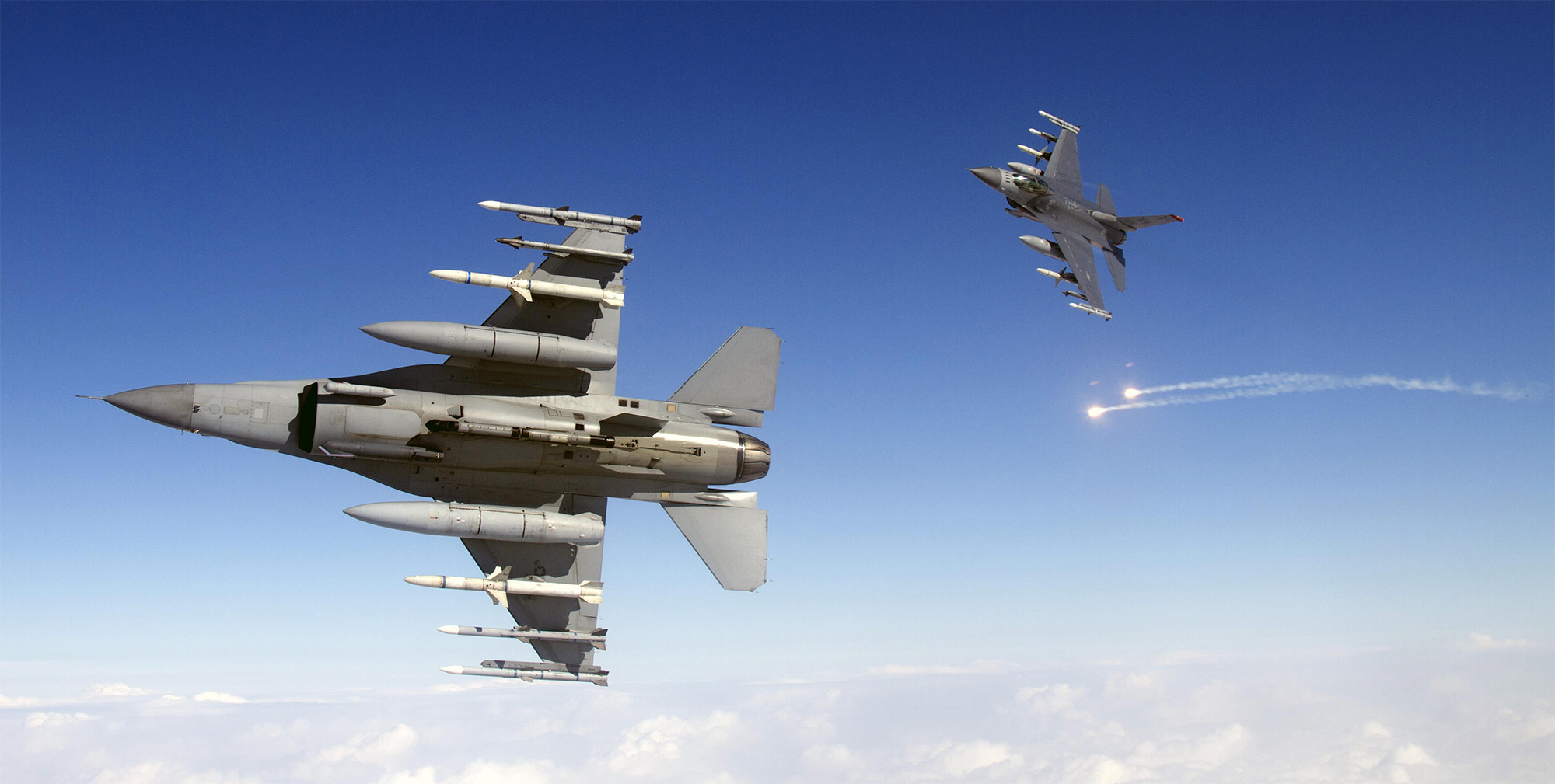
 www.sandboxx.us
www.sandboxx.us
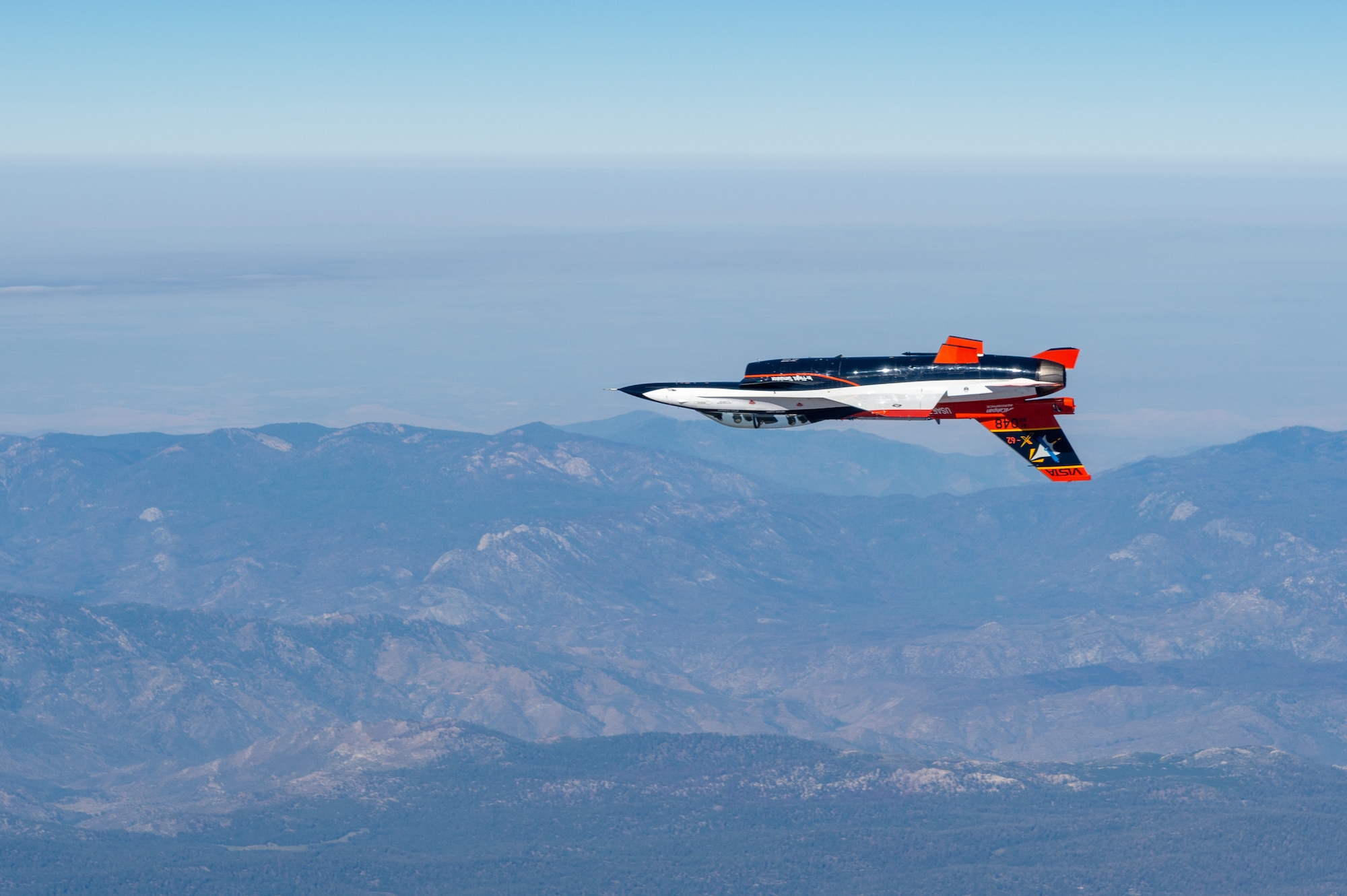
The Air Force is pitting its AI-piloted F-16 against humans in 'complex dogfights'
On Wednesday, the U.S. Air Force revealed that its ongoing effort to field artificial intelligence (AI) pilots for combat aircraft has already seen AI-piloted F-16s take on their human counterparts in complex air-combat exercises. This effort is part of DARPA’s Air Combat Evolution (ACE) program, and is seen as an essential step toward equipping forthcoming 6th-generation fighters with AI-enabled drone wingmen.

AI-piloted F-16 takes on human pilot in 'complex dogfights'
The U.S. Air Force just revealed new information about its AI-piloted F-16, including that it has flown "complex" dog fights.
 www.sandboxx.us
www.sandboxx.us
USAF Test Pilot School and DARPA announce breakthrough in aerospace machine learning
The U.S. Air Force Test Pilot School and the Defense Advanced Research Projects Agency were finalists for the 2023 Robert J. Collier Trophy, a formal acknowledgement of recent breakthroughs that have
www.edwards.af.mil
General Atomics mainostaa X:ssä:
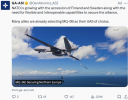
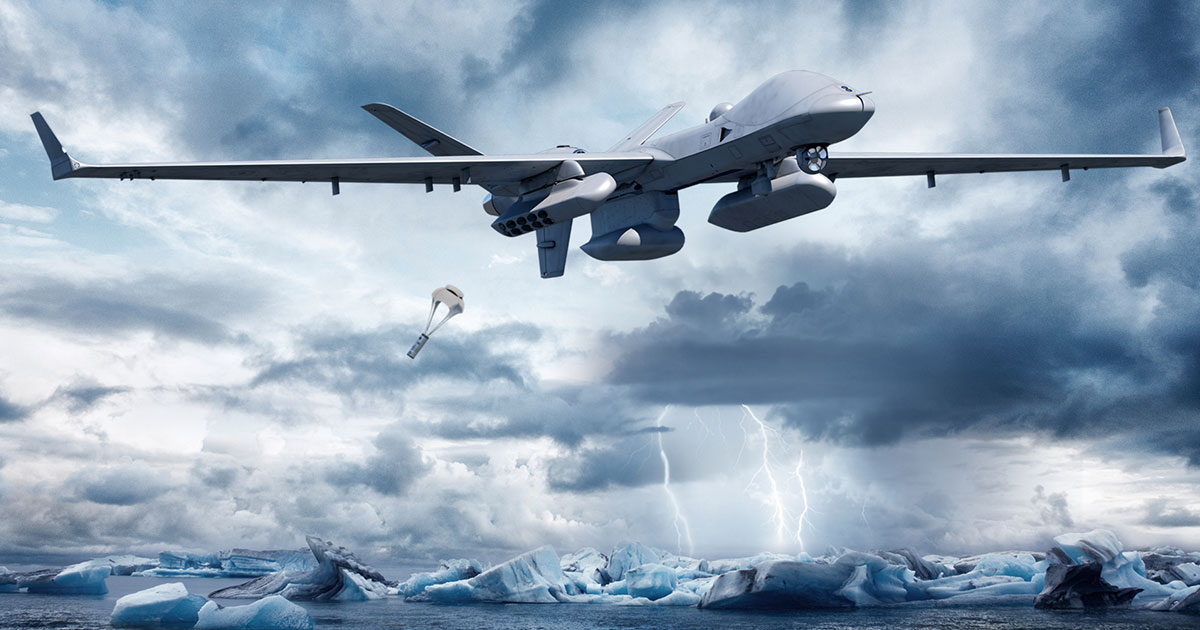


MQ-9B: Securing Northern Europe
The peaceful nations of Northern Europe didn’t choose to rewrite their defense and security outlook for the coming decades. The decision was forced upon them by aggression in the east. Now that they’ve decided to act, however, they’re moving swiftly.
www.ga-asi.com
General Atomics mainostaa X:ssä:
Katso liite: 96793

MQ-9B: Securing Northern Europe
The peaceful nations of Northern Europe didn’t choose to rewrite their defense and security outlook for the coming decades. The decision was forced upon them by aggression in the east. Now that they’ve decided to act, however, they’re moving swiftly.www.ga-asi.com
Hmmm... lopussa:
With MQ-9B, the Nordic and Northern European allies now have a surveillance platform to choose that can perform all their key missions with low acquisition and operating costs.
Onkohan noista jotain tietopyyntöjä lähtenyt vai kalasteleeko GA muuten vain kylmiltään?
moikkari
Luutnantti
Linkkasin tämän myös Ukrainan sodan havainnot ketjuun, mutta yksi asia tähän ketjuun. Suurin juttu on, että USA:lla ei taida olla autonomisia drooniparvia, oiskohan Kiinalaisilla tällä hetkellä parhaimmat parvet? Eric Schmidt yrittää saada pyörän pyörimään että tälläsiä alettaisiin kehitellä.

 www.nytimes.com
www.nytimes.com
Koko artikkelin lukemiseen toimiva linkki: https://archive.is/UqMHj
Ihan lopusta:
"So Mr. Schmidt began funding a different vision, one that is now, after the Ukraine experience, gaining adherents in the Pentagon: far more inexpensive, autonomous drones, which would launch in swarms and talk to each other even if they lost their connection to human operators on the ground. The idea is a generation of new weapons that would learn to evade Russian air defenses and reconfigure themselves if some drones in the swarm were shot down."
"It is far from clear that the United States, accustomed to building exquisite, $10 million drones, can make the shift to disposable models. Or that it is ready to bring on the targeting questions that come with fleets driven by A.I."

In Ukraine, New American Technology Won the Day. Until It Was Overwhelmed. (Published 2024)
Project Maven was meant to revolutionize modern warfare. But the conflict in Ukraine has underscored how difficult it is to get 21st-century data into 19th-century trenches.
Koko artikkelin lukemiseen toimiva linkki: https://archive.is/UqMHj
Ihan lopusta:
"So Mr. Schmidt began funding a different vision, one that is now, after the Ukraine experience, gaining adherents in the Pentagon: far more inexpensive, autonomous drones, which would launch in swarms and talk to each other even if they lost their connection to human operators on the ground. The idea is a generation of new weapons that would learn to evade Russian air defenses and reconfigure themselves if some drones in the swarm were shot down."
"It is far from clear that the United States, accustomed to building exquisite, $10 million drones, can make the shift to disposable models. Or that it is ready to bring on the targeting questions that come with fleets driven by A.I."
Ei amerikkalaiset taida kuitenkaan ihan pihalla olla noitten droneparvien suhteen.
The US Is Testing Micro-Drone Swarms Deployed From Fighter Jets
www.newsy.com/66224/The micro-drones use collective decision-making to execute missions.
Jake Godin
These U.S. fighter jets are releasing swarms of micro-drones.
They're called Perdix micro-drones, and they were originally developed at the Massachusetts Institute of Technology's Lincoln Labs. The drones are meant for intelligence, surveillance and recon.
In October, 103 3-D printed drones were deployed from three F/A-18 Super Hornets.
The drones then completed "missions." The swarm was able to do collective decision-making, adaptive-formation flying and self-healing.
Self-healing is essentially the ability of a drone swarm to reconfigure its formation if one of the drones goes down.
It was the largest such test from the Defense Department. While these drones aren't weaponized, the U.S. has expressed interest in attack swarms for the future.
moikkari
Luutnantti
Joo tuon muistan myös.Ei amerikkalaiset taida kuitenkaan ihan pihalla olla noitten droneparvien suhteen.
The US Is Testing Micro-Drone Swarms Deployed From Fighter Jets
www.newsy.com/66224/
Tuo Eric Schmidtin idea drooniparvesta on tosin tarkoitettu mm. jalkaväen avuksi muodostamaan jatkuvasti yleiskuvaa. Näissä tarvittaisiin näitä kiinalaisten leluparvien kaltasta osaamista, joilla on muodostettu millon mitäkin muodostelmia taivaalle.
Tälläinen maasodankäynnin apu pitäisi pystyä päästämään irti maasta eikä ilmasta käsin.
Saattaahan ne tietää jotain. Predaattoriahan testattiin PV:n toimesta. Lähivuosina ostetaan jotain isompaa kuin Orbiter.Onkohan noista jotain tietopyyntöjä lähtenyt vai kalasteleeko GA muuten vain kylmiltään?
Joo tuon muistan myös.
Tuo Eric Schmidtin idea drooniparvesta on tosin tarkoitettu mm. jalkaväen avuksi muodostamaan jatkuvasti yleiskuvaa. Näissä tarvittaisiin näitä kiinalaisten leluparvien kaltasta osaamista, joilla on muodostettu millon mitäkin muodostelmia taivaalle.
Tälläinen maasodankäynnin apu pitäisi pystyä päästämään irti maasta eikä ilmasta käsin.
Tuossa kokeilussa tuo laukaisutapa ei varmaan ole se oleellisin eikä vaikein tekijä vaan parven toiminta yhdessä. Artikkelissa mainitaan asioita, joita tuo parvi teki ja joita kiinalaisten muodostelmadronien tuskin tarvitsee tehdä.
Jotenkin tuntuu, että monen huomio on FPV-droneissa sekä Mavic:ssa ja samalla on jäänyt huomaamatta siivellisten tiedusteludronien huomattava lisääntyminen Ukrainan taistelukentillä. Esimerkiksi Suomessakin käytettävään Rangeriin verrattuna nuo dronet ovat pienempiä, sähkökäyttöisiä ja varmasti huomattavasti halvempia. Veikkaisin, että noita käytetään myös organisaatiossa melko paljon alempana kuin Rangereita. Vaikkei käytössä olisi droneparvia, niin tulevaisuudessa taivaalla tulee olemaan muutenkin paljon enemmän silmiä kuin nykyään.
Edit: Videolla dronet laukaistiin Horneteista eli asialla on laivasto. Tämä taas jostain syystä tuo mun mieleen, että noita käytettäisiin mm. Kiinan vastaisessa konfliktissa.

PV:ssä oli viime vuonna menossa keskiraskaan droonin koelennot. Ei niitä vaihtoehtoja kovin monia ole.Saattaahan ne tietää jotain. Predaattoriahan testattiin PV:n toimesta. Lähivuosina ostetaan jotain isompaa kuin Orbiter.
Näitä ratkaisuja näkyy jatkuvalla syötöllä. Hankala vaan rakentaa laukaisuinfraa kun dronet ei ole vielä vakiintuneita. Itse uskoisin peruskuorma-auton lavalle nostettaviin kasettiratkaisuihin.Joo tuon muistan myös.
Tuo Eric Schmidtin idea drooniparvesta on tosin tarkoitettu mm. jalkaväen avuksi muodostamaan jatkuvasti yleiskuvaa. Näissä tarvittaisiin näitä kiinalaisten leluparvien kaltasta osaamista, joilla on muodostettu millon mitäkin muodostelmia taivaalle.
Tälläinen maasodankäynnin apu pitäisi pystyä päästämään irti maasta eikä ilmasta käsin.
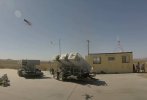
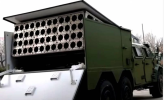
Yllä olevan postauksen ensimmäinen kuva on videolta, joka on vuodelta 2017. Tuskin amerikkalaiset ovat tuon jälkeen levänneet laakereillaan, eivät vaan välttämättä halua huudella tekemisistään.
Watch the Navy's LOCUST launcher fire a swarm of drones
Watch the Navy's LOCUST launcher fire a swarm of drones
The Navy's new LOCUST (Low-Cost UAV Swarming Technology) launchers fire a swarm of drones that can jam enemy communications, and waste enemy resources by drawing fire. The launchers are capable of tube-launching 31 drones in just 40 seconds. The drones can fly autonomously but can also be controlled manually.
At just $15,000 a unit, the drones are expendable and can be used in dangerous situations. LOCUS is now in its development and testing phase.
No nyt löytyy sitä AI:ta

Shield.ai Nova SLAM application

Unveiling the Future of Defense Tech: Shield AI’s V-BAT Teams for Autonomous Missions


Shield.ai Nova SLAM application

Unveiling the Future of Defense Tech: Shield AI’s V-BAT Teams for Autonomous Missions
V-BAT Teams enables multiple V-BATs to autonomously execute missions in electronically contested environments while reading and reacting to adversaries, the environment, and the other V-BATs executing the mission. It comes in the form of a modular Nvidia GPU upgrade running Hivemind, Shield AI’s AI pilot, which is loaded into the modular payload bay of the V-BAT.
Shield AI is now accepting orders for V-BAT Teams, with deliveries occurring in 2024. As defense technology continues to evolve, V-BAT Teams are positioned at the forefront, ushering in the next generation of aerial artificial intelligence and autonomy in military operations.
The Greatest Victory Requires No War.

rty19
Greatest Leader
Liekinheitinrobokoira
Hankinnan arvo Ukrainalaisille n. 3,8 miljoonaa euroa eli n. 540 tuhatta euroa per drone.
The enemy will not hide - scouts received EOS complexes from the Serhiy Prytula Foundation
The enemy will not hide - scouts received EOS complexes from the Serhiy Prytula Foundation
Units of the GUR of the Ministry of Defense of Ukraine received EOS tactical-level drone complexes from the Serhiy Prytula charitable foundation.
With the donations of Ukrainians, the foundation team purchased and handed over 7 UAVs and 2 ground control stations with a total cost of 59,781,793 hryvnias.
EOS reconnaissance drones produced in Estonia have proven themselves excellently at the front - they are capable of working at a depth of up to 50 kilometers in the conditions of a complex radio-electronic environment, do not create a lot of noise, and therefore do not attract unnecessary attention of the enemy.
High-quality optics allow you to collect detailed intelligence for planning ground operations, fix enemy targets and adjust Ukrainian artillery fire.
Thank you to all citizens and volunteers who continue to strengthen the capabilities of scouts and all Security and Defense Forces of Ukraine!
Glory to Ukraine!

Головне управління розвідки МО України
🦉 Ворог не сховається ― розвідники отримали комплекси EOS від фонду Сергія Притули 🤝 Підрозділи ГУР МО України отримали комплекси безпілотників тактичного рівня EOS від благодійного фонду Сергія Притули. 💰 На пожертви українців команда фонду закупила та передала 7 БПЛА та 2 наземні станції...t.me
